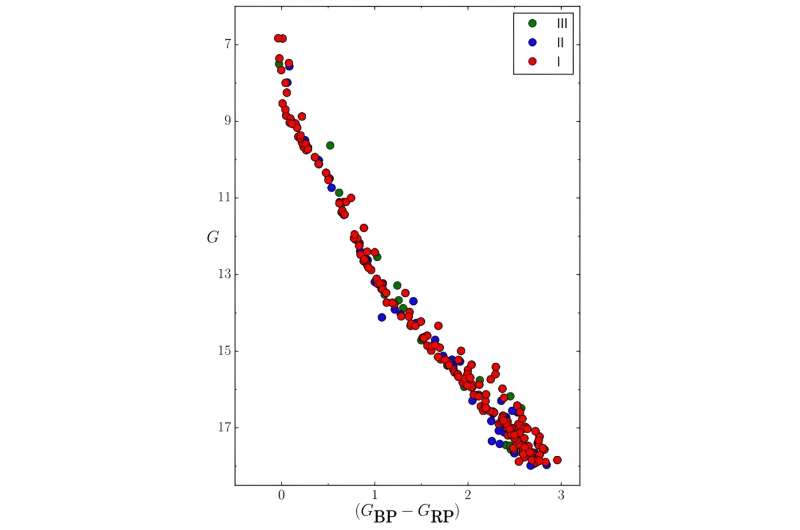December 21, 2023 report
This article has been reviewed according to Science X's editorial process and policies. Editors have highlighted the following attributes while ensuring the content's credibility:
fact-checked
preprint
trusted source
proofread
Young open cluster Messier 39 investigated in detail

Italian astronomers have performed high-resolution spectroscopic observations of a young open cluster known as Messier 39. Results of the observational campaign, presented in a paper published Dec. 14 on the pre-print server arXiv, yield essential information about the cluster's chemical composition.
Open clusters (OCs), formed from the same giant molecular cloud, are groups of stars loosely gravitationally bound to each other. So far, more than 1,000 of them have been discovered in the Milky Way, and scientists are still looking for more, hoping to find a variety of these stellar groupings. Expanding the list of known galactic open clusters and studying them in detail could be crucial for improving our understanding of the formation and evolution of our galaxy.
Messier 39 (or M39 for short, also known as NGC 7092) is a young Galactic open cluster located some 1,000 light years away in the constellation Cygnus. The cluster has a linear tidal radius of 28 light years, a mass of about 232 solar masses, and its age is estimated to be approximately 280 million years.
However, although Messier 39 was discovered almost three centuries ago, it has not been observed with high-resolution spectroscopy yet and its chemical composition remains unknown. That is why a team of astronomers led by Javier Alonso-Santiago of the Catania Astrophysical Observatory in Italy, decided to conduct such observations of this cluster using the High Accuracy Radial velocity Planet Searcher for the Northern hemisphere spectrograph (HARPS-N) and the Fiber-fed Echelle Spectrograph (FIES).
"We focused on M 39, a nearby young open cluster little studied in recent years, whose chemical composition was so far unknown. We performed high-resolution spectroscopy with the HARPS-N and FIES spectrographs for 20 likely cluster members that were supplemented with archival photometry and Gaia DR3 data," the researchers explained.
First of all, the team identified 260 likely members of Messier 39 within a radius of 250 arcminutes around the nominal cluster center. It turned out that the three identified members are double-lined spectroscopic binary systems, and that there are no evolved stars in this sample. By examining the spatial distribution of these members, a distance to Messier 39 was inferred to be approximately 980 light years.
The astronomers managed to derive radial and projected rotational velocities of the stars in their sample. They found that most of the stars have rotational velocities ranging from −6 to −3 km/s, and a mean radial velocity for Messier 39 was calculated to be −5.46 km/s. They also estimated the extinction and the atmospheric parameters of these stars.
The authors of the study carried out the chemical analysis for the nine coolest stars in the sample (with effective temperatures below 7,100 K), determining abundances for 21 elements. They found that Messier 39 has a solar-like metallicity (0.04 dex) and that the investigated stars have a chemical composition similar to that of the sun.
The researchers noted that only sodium shows a lower abundance in the studied sample, while sulfur and the heaviest elements, especially barium, display higher values. Moreover, it was found that Messier 39 shows solar-like mean ratios for alpha elements and iron-peak elements to iron, while for the neutron-capture elements this ratio is slightly overabundant.
Based on these results, the scientists concluded that the chemical composition of this cluster is fully compatible with that of the Galactic thin disk.
More information: J. Alonso-Santiago et al, High-resolution spectroscopy of the young open cluster M 39 (NGC 7092), arXiv (2023). DOI: 10.48550/arxiv.2312.08581
Journal information: arXiv
© 2023 Science X Network





















